US Sunlight 97330 is a solar-powered attic fan designed to improve ventilation and reduce heat buildup in your attic. It is equipped with a powerful solar panel that converts sunlight into electricity to power the fan, eliminating the need for electrical wiring. The fan is easy to install and can be positioned on any area of the roof that receives direct sunlight. It features an adjustable solar panel that can be tilted to maximize sun exposure and optimize performance.
US Sunlight 97330 is a solar-powered attic fan designed to improve ventilation and reduce heat buildup in your attic. It is equipped with a powerful solar panel that converts sunlight into electricity to power the fan, eliminating the need for electrical wiring. The fan is easy to install and can be positioned on any area of the roof that receives direct sunlight. It features an adjustable solar panel that can be tilted to maximize sun exposure and optimize performance.




-
 1
1
-
 2
2
-
 3
3
-
 4
4
US Sunlight 97330 Installation guide
- Type
- Installation guide
- This manual is also suitable for
US Sunlight 97330 is a solar-powered attic fan designed to improve ventilation and reduce heat buildup in your attic. It is equipped with a powerful solar panel that converts sunlight into electricity to power the fan, eliminating the need for electrical wiring. The fan is easy to install and can be positioned on any area of the roof that receives direct sunlight. It features an adjustable solar panel that can be tilted to maximize sun exposure and optimize performance.
Ask a question and I''ll find the answer in the document
Finding information in a document is now easier with AI
Related papers
Other documents
-
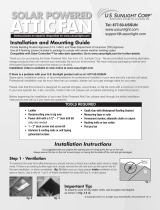 U.S. Sunlight #9010TR Operating instructions
U.S. Sunlight #9010TR Operating instructions
-
Gibraltar Building Products PRV50BL Operating instructions
-
Gibraltar Building Products PRCS4WG Operating instructions
-
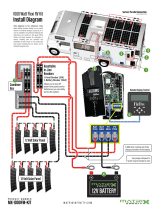 Matrix Infinity Flexi RV Installation guide
Matrix Infinity Flexi RV Installation guide
-
ThermoClimb TC-5925 Installation guide
-
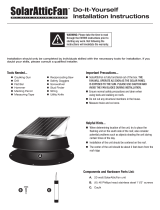 SolarAtticFan SAFB-SS Installation guide
SolarAtticFan SAFB-SS Installation guide
-
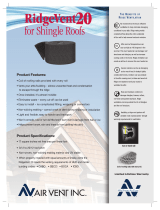 Air Vent MRV20 Specification
Air Vent MRV20 Specification
-
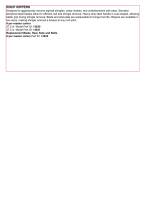 Roof Zone 13830 User manual
Roof Zone 13830 User manual
-
Ventamatic VXSOLARGABLEUPS Operating instructions
-
Gibraltar Building Products RVG38BR Operating instructions












